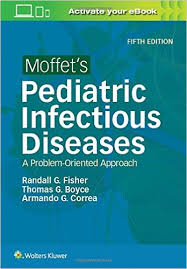I write with reverence about what I believe to be one of the best medical books of all time: Moffet’s Pediatric Infectious Diseases, 5e (2017).
The main problem with tackling infectious diseases from a diagnostic standpoint is that ID can be hard to classify clinically. The traditional approach is, basically, to ask the question Does the patient have an infection and, if so, what’s the organism? The problem with this approach is that this question is far too narrow because one also needs to specifically consider alternatives to infections as well. Therefore, the questions that need to be asked first at the bedside are What syndrome does this patient have and what might be the possible etiologies of this syndrome?
For seasoned clinicians, getting the syndrome right can be the most straightforward part. You look at the patient and ask is this a sepsis-like syndrome, and upper respiratory illness-like syndrome, and so forth. However, where you go from there requires preplanning (i.e., reading of this book!). Take, for example, meningitis. Many clinicians break down the differential diagnosis into purulent meningitis vs. “aseptic” meningitis. Dr. Moffet, one of the authors, doesn’t like this classification scheme, and does a great job explaining why:
The diagnosis of viral meningitis should not be regarded as equivalent to aseptic meningitis syndrome, which is a syndrome that has many other possible etiologies. “Nonpurulent meningitis” is a better problem-oriented diagnosis because it makes the clinician more likely to consider such important etiologic possibilities as tuberculosis or partially treated bacterial meningitis.
In other words, before you use a diagnostic word or phrase, make sure you know, not just what it means, but also what the particular construction does to you and to the people you communicate with. “Aseptic” meningitis might be correct definitionally, but it also might set you down the wrong path diagnostically. So what you need to do is very simple: Read this book so that you know how to conceptualize problems correctly in medicine generally, but in infectious diseases in particular.

You will find facts here that can also be found in any infectious diseases textbook. However, the way Dr. Moffet and his coauthors break things down is really remarkable. One of my favorite examples is how this book approaches CSF studies in patients with suspected meningitis. Almost any infectious diseases or neurology book will show you a table of various CSF composition findings (e.g., WBC, glucose, etc.), but Moffet’s Pediatric Infectious Diseases, 5e (2017) explains everything in a way that makes it stick. For example, with regard to the role of CSF glucose:
A decreased CSF glucose is usually present in purulent meningitis. It has little more than supportive diagnostic value because the purulent spinal fluid and Gram stain already indicate the presumptive diagnosis of bacterial meningitis….
In patients with non purulent meningitis, a decrease CSF glucose has special diagnostic value [because it suggests mycobacterial or fungal meningitis]. (Page 232).
The idea here is that the authors don’t just throw numbers or tables at you. Rather, they show you how to use laboratory data algorithmically to solve clinical problems.
Although titled as a pediatrics infectious disease book, the vast majority of the material in this book is relevant to adults as well and to medicine generally. I recommend this book very highly to learners at every level, including medical students, trainees, and attendings, who are interested in infectious diseases.


Leave a Reply